Chamomile Plant
- October 30, 2023
- 0 comment
Chamomile, scientifically known as Matricaria chamomilla or Chamaemelum nobile, is a delicate and versatile herb that has been cherished for centuries for its numerous medicinal and culinary uses. This dainty, daisy-like plant is renowned for its sweet, apple-like fragrance and its soothing properties.
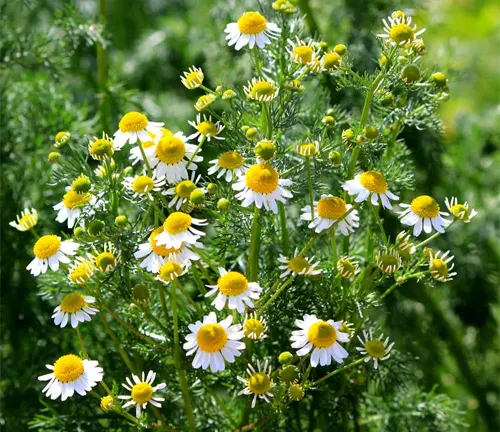

Chamomile is commonly found in two main varieties: German chamomile (Matricaria chamomilla) and Roman chamomile (Chamaemelum nobile), each with its unique characteristics. The plant’s tiny, white or yellow flowers are harvested and dried to create chamomile tea, a popular herbal infusion known for its calming effects and ability to ease stress and promote restful sleep.
In addition to its popularity as a tea, chamomile is also a key ingredient in herbal remedies and cosmetics due to its anti-inflammatory and antioxidant properties. Whether used as a natural remedy or to add a fragrant touch to gardens, chamomile remains a beloved herb appreciated for its versatility and gentle charm.
| Characteristics | Description |
| Scientific Name | Matricaria chamomilla (German Chamomile) or Chamaemelum nobile (Roman Chamomile) |
| Common Names | Wild chamomile, camomile, scented mayweed |
| Family | Asteraceae (Daisy family) |
| Type | Herbaceous annual (German Chamomile) or perennial (Roman Chamomile) |
| Height | 12 to 24 inches (30 to 60 cm) |
| Leaves | Feathery, fern-like, green, finely divided |
| Flowers | Daisy-like with white petals and yellow central disc (German Chamomile), smaller and more ground-hugging (Roman Chamomile) |
| Fragrance | Sweet, apple-like aroma |
| Habitat | Native to Europe and Western Asia, but cultivated worldwide |
| Cultivation | Well-drained soil, full sun to partial shade |
| Propagation | Seeds |
| Bloom Time | Late spring to early summer |
| Medicinal Uses | Digestive aid, sleep aid, anti-inflammatory, and skin-soothing properties |
| Culinary Uses | Herbal tea, flavoring for dishes, and in liqueurs and desserts |
| Cosmetic Uses | Ingredient in skincare products and essential oils |
| Insect Attraction | Attracts beneficial pollinators like bees |
| Other Uses | Often grown as an ornamental plant in gardens |
| Note | Two main varieties – German Chamomile and Roman Chamomile – with slight differences in appearance and growth habit. |
Botanical Beauty of Chamomile Plant
Chamomile, a botanical gem in the world of herbs, captivates with its delicate beauty. This unassuming herb, with its daisy-like flowers, is a testament to nature’s elegance. The chamomile plant, belonging to the Asteraceae family, boasts two main varieties: German Chamomile (Matricaria chamomilla) and Roman Chamomile (Chamaemelum nobile). These charming herbs can reach heights of 12 to 24 inches and have feathery, finely divided leaves. The star attraction is undoubtedly their flowers, which resemble miniature suns with white petals and a sunny yellow central disc (in the case of German Chamomile). Their sweet, apple-like fragrance adds to their allure, making chamomile a favorite in both gardens and herbal remedies.
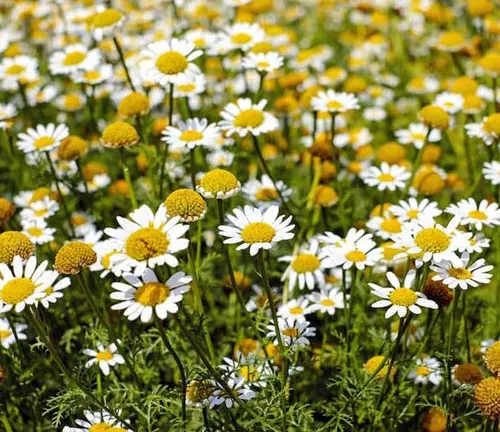
Woodland Elegance
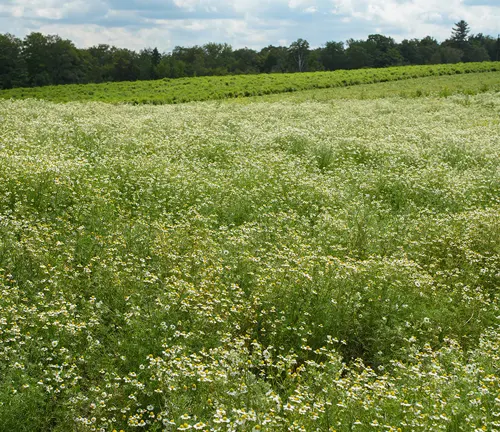
Chamomile’s woodland elegance is particularly enchanting. It seems to bring a touch of meadow serenity to any environment, whether it’s a carefully tended garden or a wild, open field. Roman Chamomile, with its low, creeping habit, creates a carpet of green with its petite, ground-hugging flowers. German Chamomile, with its upright stature, offers a more striking visual display. Together, these varieties add a touch of grace to their surroundings, creating a calming and picturesque atmosphere that beckons us to pause and appreciate nature’s beauty.
Ecological Importance
Beyond its visual appeal, chamomile plays a crucial role in supporting ecosystems. Its flowers are a magnet for pollinators like bees, helping to ensure the pollination of other plants in the vicinity. This ecological contribution promotes biodiversity and the health of the surrounding flora, making chamomile an unsung hero in the natural world.

Cultivation and Conservation
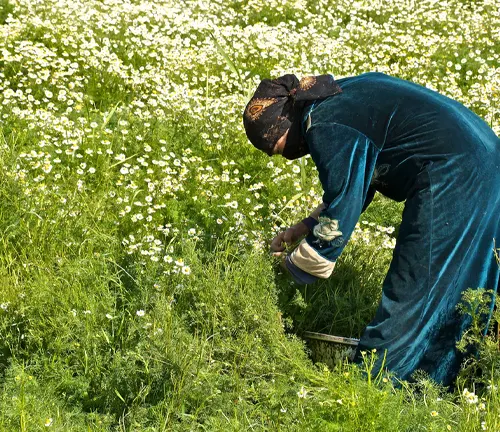
Chamomile, native to Europe and Western Asia, is now cultivated worldwide. It thrives in well-drained soil and enjoys full sun to partial shade. While chamomile is widely grown, its conservation is essential, especially considering the increasing demand for its various uses. Sustainable farming and responsible harvesting practices are vital to ensure the continued availability of this remarkable herb.
Fragrance
One of chamomile’s most endearing qualities is its enchanting fragrance. The sweet, apple-like aroma that wafts from its flowers is a delight to the senses. This fragrance is not only appealing but also therapeutic. Chamomile’s scent is known for its calming effects and can be used in aromatherapy to alleviate stress and promote relaxation.
Soil Stabilization
Chamomile’s significance extends beyond aesthetics and fragrance. The herb’s root system aids in soil stabilization, making it a valuable plant for preventing soil erosion in gardens and on hillsides. Its ability to anchor the soil contributes to its ecological value.
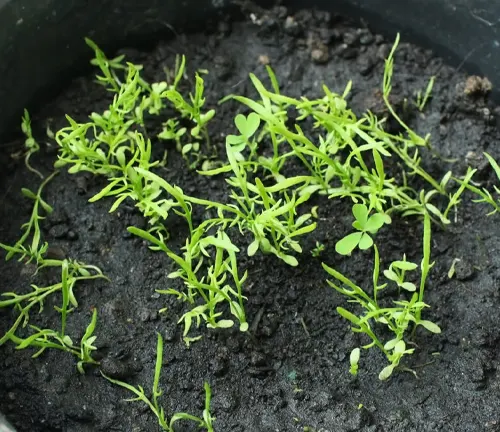
Common Uses
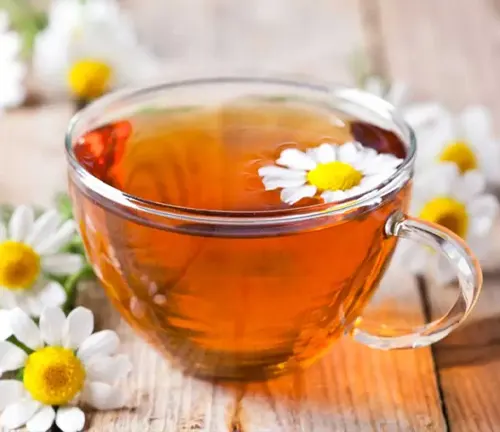
Chamomile’s versatility is evident in its myriad of uses. It is most renowned as the key ingredient in chamomile tea, a soothing herbal infusion. The tea is cherished for its ability to ease digestive discomfort, induce sleep, and reduce inflammation. Chamomile also finds its way into various culinary creations, imparting a gentle floral flavor to dishes, desserts, liqueurs, and more. In the realm of cosmetics, it’s a sought-after ingredient in skincare products and essential oils.
Benefits
Chamomile’s benefits are wide-ranging. It offers relief to those with digestive issues, promotes restful sleep, and soothes skin irritations. The anti-inflammatory and antioxidant properties of chamomile make it a natural remedy with a remarkable healing potential. Its gentle, calming nature extends to our overall well-being, making chamomile an essential herb in the world of natural medicine and a cherished presence in gardens and households alike.
Different Species
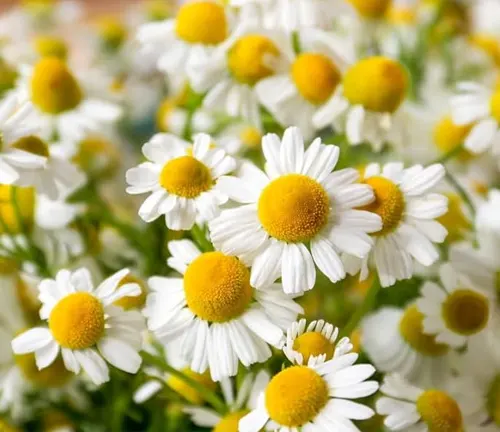
German Chamomile
(Matricaria chamomilla)
Also called wild chamomile, this species is an annual herb that is native to Europe and Western Asia. It is known for its feathery, finely divided leaves and daisy-like flowers with white petals and a bright yellow central disc. German chamomile is famous for its sweet, apple-like fragrance and is often used to make chamomile tea, a popular herbal remedy for relaxation and digestive discomfort.
Roman Chamomile
(Chamaemelum nobile)
Roman chamomile is a perennial herb that is native to Western Europe and North Africa. It has a low, creeping growth habit and smaller, ground-hugging flowers compared to German chamomile. Roman chamomile is also prized for its delicate fragrance and is often used for making herbal teas, essential oils, and in cosmetic products for its soothing properties.
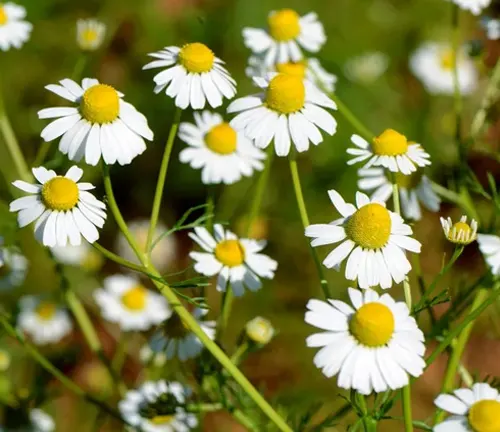
Frequently Asked Questions (FAQs)
- What is Chamomile?
Chamomile is an herb known for its daisy-like flowers and soothing fragrance. It’s used for various medicinal, culinary, and cosmetic purposes. - What are the Different Types of Chamomile?
The two main types are German Chamomile (Matricaria chamomilla) and Roman Chamomile (Chamaemelum nobile). They have slight differences in appearance and growth habits. - How is Chamomile Cultivated?
Chamomile is typically grown from seeds in well-drained soil with exposure to full sun or partial shade. It’s relatively easy to cultivate in the right conditions. - What are the Medicinal Uses of Chamomile?
Chamomile is used to alleviate digestive issues, promote sleep, and reduce inflammation. It’s often consumed as chamomile tea. - How is Chamomile Tea Made?
To make chamomile tea, dried chamomile flowers are steeped in hot water. It’s known for its relaxing and soothing properties. - Can Chamomile Help with Anxiety and Stress?
Chamomile’s mild sedative properties can help reduce anxiety and stress, making it a popular choice for relaxation. - What are the Culinary Uses of Chamomile?
Chamomile can be used to flavor dishes, desserts, and even in liqueurs. It adds a delicate, floral note to recipes. - Is Chamomile Safe for Everyone?
While generally considered safe, individuals with allergies to plants in the Asteraceae family should exercise caution. Pregnant or nursing women and individuals taking certain medications should consult a healthcare professional before using chamomile in large quantities. - Can Chamomile be Used in Skincare?
Chamomile is a common ingredient in skincare products and essential oils due to its anti-inflammatory and soothing properties. - What’s the Ecological Role of Chamomile?
Chamomile attracts pollinators like bees, contributing to biodiversity and ecosystem health. Its root system also helps stabilize soil, preventing erosion. - How Do I Harvest and Dry Chamomile Flowers?
To harvest chamomile, pick the flowers when they’re fully open. Dry them by hanging them upside down or using a food dehydrator. Store in a cool, dark place. - Is Chamomile an Invasive Plant?
Chamomile can self-seed and spread, but it’s not typically considered invasive. Responsible cultivation and harvesting practices can prevent overgrowth.





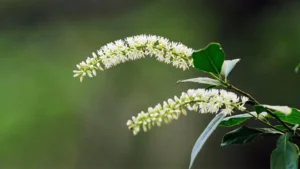

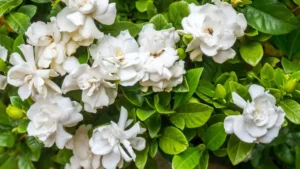
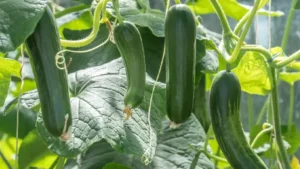
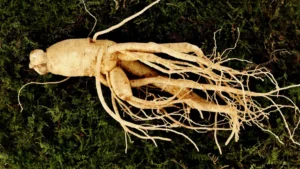
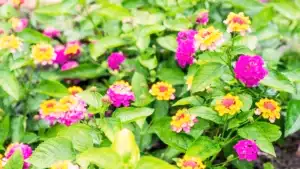
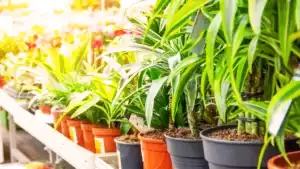
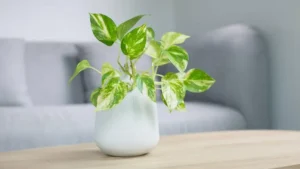

Leave your comment